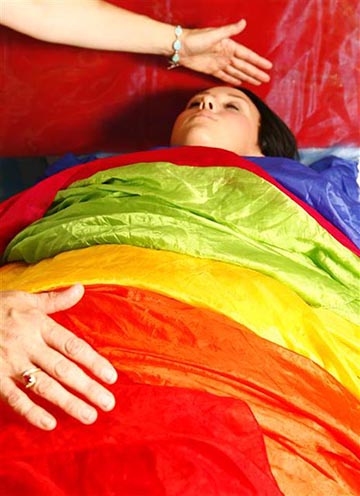Written by Visiting Lecturer Nancy McCarthy
“Variety of form and brilliancy of colour in the objects presented to patients are actual means of recovery.” — Florence Nightingale, “Notes on Nursing”, 1898
Color is the visible portion of the electro magnetic spectrum; it is vibration. Certain vibrations are known to affect living cells. Is it possible that certain colors or combinations of colors can affect our wellbeing and physical health? An orange sapling in a cobalt blue sky; slate gray clouds hovering over an inky sea; hedges of blinding yellow forsythia, the purple and blue shadows of trees on snow. All are good to look at; all have a positive effect on my mood.
Continue reading after the jump to learn more about color…
I encourage any one wanting to improve their work with color to regularly spend time in the natural environment. Observing the complex and subtle color of nature stimulates the cones (photoreceptor cells in the retina) of the eye and sensitizes us to color. Additionally, a walk in the forest seems to make us feel good. The Japanese Ministry of Agriculture, Forestry and Fisheries even coined a term for it: shinrin-yoku. It means taking in the forest atmosphere or “forest bathing,” and the ministry encourages people to visit forests to relieve stress and improve health. Dr. Yoshifumi Miyazaki of Chiba University reported that 40 minutes of walking in the forest was associated with improved mood and feelings of vigor. He backed up the subjective reports by the findings of lower levels of the stress hormone cortisol in subjects after forest walks, compared with those who took laboratory walks. Of course, vision is not the only sense affected by the environment, smell and hearing are as well. I suspect that the stress reduction resulting from a walk in nature is due to the impact on all the senses, and color is a vital part.
What about color used in a more focused way, as a tool in healing? A quick scan of the Internet shows many entries on the subject. Unfortunately, many of these link to sites that are aimed at a population devoid of critical thinking skills. They trumpet instant cures of serious illnesses; just provide your Visa, MasterCard or Amex number and you too can own the chromo therapy machine, color therapy glasses, LED colored lights that will cure your depression, diabetes, multiple sclerosis …
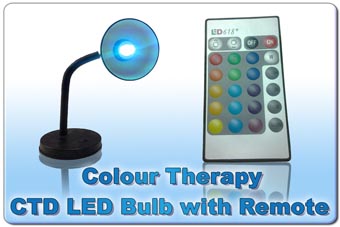

Like all alternative healing modalities, a lot of quackery surrounds the subject of healing with color. The idea of color healing is compelling and has a long history. The Canon of Medicine, a tome significant in the earliest history of medicine, written by the Persian physician Avicenna (980-1037) in the 2nd century, addresses the use of color both as a diagnostic tool, relating color to certain conditions, as well as a medicinal tool, using specific colors to cure ailments. He suggested that looking at red moved the blood, viewing blue cooled it, and looking at yellow reduced muscular pain and inflammation. Below is a chart from the 15th century used for diagnosing illnesses based on the color of urine.
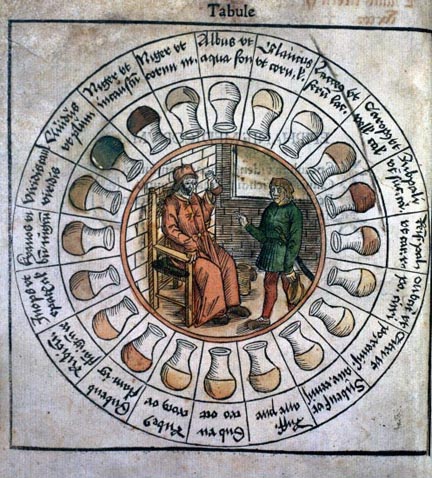
In the late 19th century an American civil war general, Augustus Pleasanton, (1801—1894) wrote “The Influence of The Blue Ray of The Sunlight and of The Blue Color of the Sky” which discussed how the color blue benefits crop production, as well as livestock and human health. This was the era of the spiritualist movement in the UK and America. Belief was strong is things unseen and unproven by science.
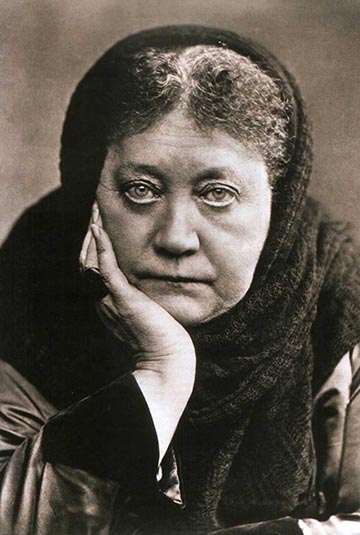
Madame Blavatsky (1831— 1891) a Russian spiritualist, author and co-founder of the Theosophical Society, published and spoke widely about the benefits of color healing. She had lived and studied in India and brought the tradition of Ayurvedic healing with color to audiences in Europe and America. The Veden Academy web site describes the color healing tradition in Ayurvedic practice and details the relationship of specific hues to physical and emotional qualities, such as: “The physiological effects of orange colour are
- The appetite elevated and increases.
- Relaxation is induced and the potential for sleep increases.
- The rates of blood flow slow down.
- A sense of placidnes, colourness and security develops when orange is combined with blue.”
This heading of this ayurvedic color chart reads, “The detailed physiological responses to colour supported by scientific datas,” but there is no reference to the supporting data. This is typical of almost all chromo therapy sites. Personally, I don’t need scientific data to believe that some theories or aspects of some theories are useful, but the attempt to imply that scientific research supports them (when there has been none) is disagreeable. After Madame Blavatsky, a true charlatan followed. Dinshah P. Ghadiali (1873-1966), known widely as Dinshah claimed to have discovered the scientific principles which explain why and how the different colored rays have various therapeutic effects on organisms. He invented the “spectro chrome” machine and claimed it could cure any disease except broken bones.
 Dinshah’s Spectro Chrome Machine
Dinshah’s Spectro Chrome Machine
It was marketed for use by intelligent people, because “drugs quickly upset the nervo-vital balance of persons of high mental and spiritual development…” The machine did not work but the marketing did, until the passage of the Food Drug and Cosmetic Act of 1938. There were many court cases against Dinshah; finally in 1958 the government obtained an injunction against the shipping of spectro chrome machines across state lines. After his death his son took over the business, the Dinshah Health Society continues to offer instruction and devices for use in color therapy.
Color therapy thus far has not been proven by scientific research to be effective. I think there may be potential yet, but I do not think spectral colored light, aimed at the eyes or limbs, or rainbow fabric wraps, are likely to be curative. Healing with color will probably use the complex subtle colors of nature. In the meantime, I think it is good for us to simply observe and enjoy color. Here is a list of places, mostly close by, to do so.
- Arnold Arboretum
Walk through acres of trees from around the world; the Arboretum is Harvard’s tree museum. A 20-minute ride from MassArt on the #39 bus.

- Mapparium
Need a jolt? The complementary blue and orange is energizing!
A 30-minute walk from MassArt, open Tuesday through Sunday.

- Trinity Church
The stained glass windows designed by John Lafarge are extraordinary.
Green line to Copley.

- Singing Beach, Manchester, MA
The color of the ocean is always changing, always inspiring. Take the Green line to North Station; Rockport line to Manchester; beach is about a 20 minute walk from the train - Boston Commuter Boats
For more ocean and sky colors go out on of the MBTA’s commuter boats. Green line, to the Blue line, get off at Aquarium Station, walk to Long Wharf.

- Bird’s World, Franklin Park ZooLet the spectral colored feathers ignite the cones of your eyes! Take the 39 bus to Forest Hills Station, then take the Route 16 bus to Franklin Park Zoo.
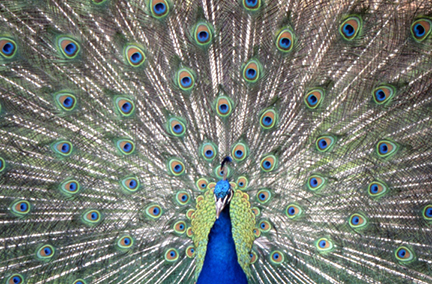
- Isabella Stewart Gardner Museum
The paintings glow in dim halls, and the central garden‘s greenery is especially welcome in winter. Right around the corner!

- The Emerald Necklace
An evocative name for land that contains the James P. Kelleher Rose Garden in the Fens, the Muddy River, the Charles River Esplanade — all places to find the color of nature in our own back yard!


